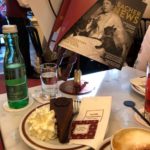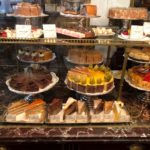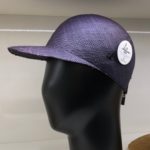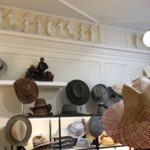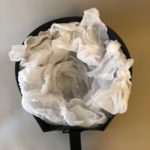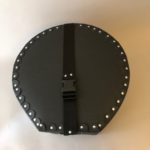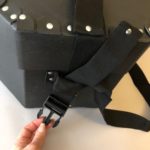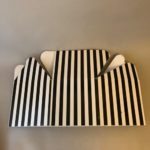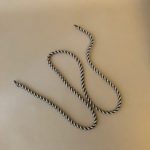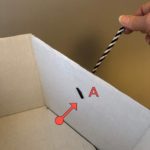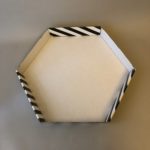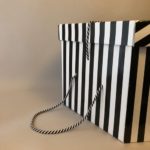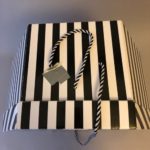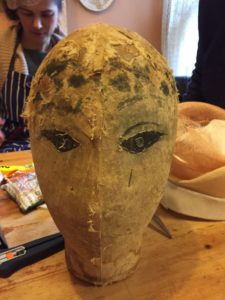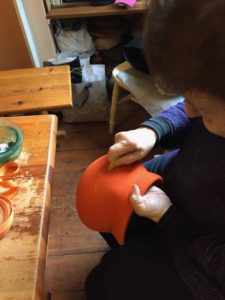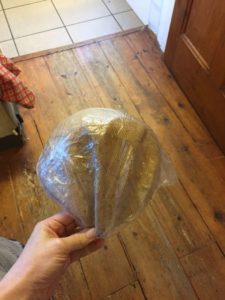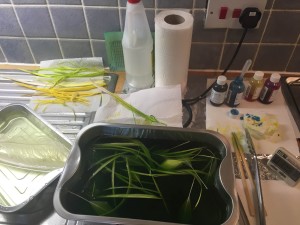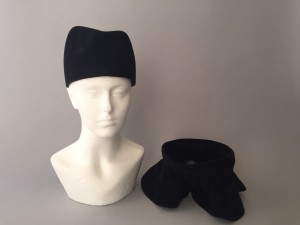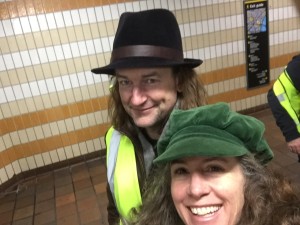Having a poupée, while working on a hat is extremely helpful, most professional milliners would say essential. What is a poupée? It is a French word for doll, but when speaking of millinery it is a hard buckram head and neck shape that is covered in batting (wadding) and mid weight calico. An authentic millinery poupée is hard to come by and often expensive. I learned to make a Millinery Poupée from London milliner, Edwina Ibbotson. She learned it from Rose Cory, a former miller to the Queen.
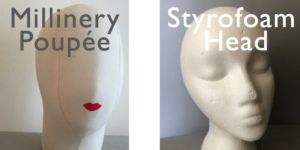
If you are just getting started with millinery, picking up an inexpensive styrofoam head from a wig shop is often a good short term solution. Despite having a few proper millinery poupées, on occasion I still need styrofoam heads for display or teaching workshops. They are utilitarian but not attractive.

A while ago I saw a styrofoam head covered in off-white paper at a local shop. It looked much better than the plain styrofoam. I love découpage, the art or craft of decorating with cut out pictures, but had not done it in a long time. One evening armed with a pot of watered down white glue (~1:1), a stack of magazines, a small paint brush, and a movie on Netflix, I set to work. I was all over the map with ideas of what to do…flowers, greenery, random collage, sheet music, body parts? There seemed to be a fair bit of tans and pinks in the magazines, so I went with the idea of doing it in what I thought of as a range of light neutral tones. Midway through I decided to add more color for the hair, eyes and lips.
It was getting late into the night. I had tried a few different things and was tired. I try not to judge my own work when I am tired. I set it aside to dry, hoping that in the morning I would be delighted with my arty efforts.

I came out the next morning with excited anticipation and looked. I was not excited after I saw it. “Maybe I am being too hard on myself,” I wondered. I asked my youngest (a teenager) what she thought. She paused and said regretfully, “It’s scary.” I felt disappointed, frustrated, and regretful of the “waste” of time. In that moment I found it difficult to see it as a learning opportunity. I set it in a corner and left it for a few months.
Finally, I needed to fix it or toss it. Back to the drawing board. I thought about flowers, etc. again. I have seen foam heads covered in floral cottons and although cute, I think it is a distraction from the hats, so I wanted something simple, neutral and less personified than my first attempt. I had a pad of black paper. I hadn’t thought about black before, but there was enough paper to cover the head and maybe having a darker head would be great for the light colored hats that seem to disappear against the calico.
Again, a pot of diluted glue, paper, brush and this time the Audible book, Born A Crime by Trevor Noah, which was very good, by the way, I set to work doing paper mache. A few hours later, with sticky fingers stained an odd blue-y-black, I left it to dry.
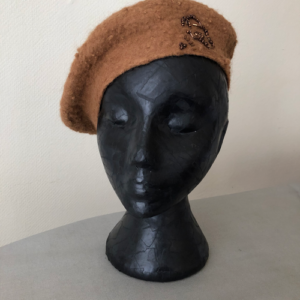
The next morning with guarded excitement and blue fingers, I took a peak. She was lovely. I adore flat black. She looked sleek and elegant. I will call her Trevi.
I have since tried putting a few pins into her. The several layers of paper and glue give the pins a little extra bite for blocking or shaping something. I will always cover her in plastic wrap (cling film) while blocking, to protect her and just incase the black decides to bleed if it gets wet.

I encourage you to not give up the quest for an authentic millinery poupée as they are lovely to work with, but a découpage or papier mâché head can keep you working, while you save your pennies.
Tips for découpage or papier mâché. Thinner paper is more plyable. Thick paper needs to get moistened and soft to contour well. Tear paper rather than cut for smoother edges. Tear smaller pieces to use around the curve of eyes and nose will prevent pointy bits. If your fingers get too sticky, wash them and start again. Let the top dry before doing the bottom, as you don’t want it to stick to the table.
I would love to see or hear about your poupée projects. Please send me photos or post a comment.








 If you give it a try, I’d love to see what you come up with. Happy Fishing.
If you give it a try, I’d love to see what you come up with. Happy Fishing.





